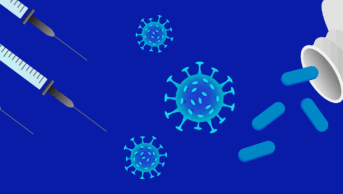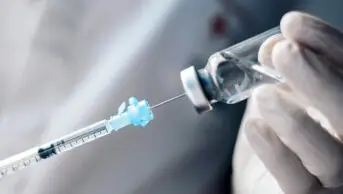I wish to highlight an ongoing problem to the readers of The
Pharmaceutical Journal with shortages of one of our newer heart failure treatments sacubitril/valsartan.
Heart failure (HF) is the most malignant form of heart disease and has outcomes comparable with most common cancers[1]
,[2]
. The prevalence of HF is rising owing to increasing population-level life expectancies and the rise of multi-morbidity[3]
. The burden of HF weighs heavily on the NHS across the UK, with 81,449 primary discharges for HF from English and Welsh hospitals alone in 2015–2016[4]
. The median length of stay of patients admitted to a cardiology ward with HF was 9 days in 2015–2016[4]
. In-hospital mortality for HF is approximately 8.9%, and approximately 30% of hospitalised patients who survived to the point of discharge were dead within a year[4]
.
Pharmacological treatment is the cornerstone of improving outcomes in patients with heart failure and reduced ejection fraction (HF–REF), the most common form of HF[5]
. Angiotensin-converting enzyme inhibitors (ACEI), angiotensin receptor blockers (ARB), beta-blockers (βB) and mineralocorticoid receptor antagonists (MRA) have long been known to improve the outcomes of patients with HF–REF[5]
. In 2014, the PARADIGM–HF trial compared the efficacy of a new compound called sacubitril/valsartan versus ACEI in patients with symptomatic HF–REF despite optimisation of conventional pharmacological options, such as ACEI, ARB, βB and/or MRA[6]
. The PARADIGM–HF trial was stopped early owing to the overwhelming benefit of sacubitril/valsartan, with relative reductions in the primary endpoint of the composite of cardiovascular death and HF hospitalisation by 20% and of all major secondary endpoints, including all-cause death by 16%[6]
. Sacubitril/valsartan was subsequently approved for use in Europe and is now recommended in all major national and international HF guidelines[5]
,[7]
,[8]
,[9]
,[10]
.
Cases of shortages of sacubitril/valsartan have been reported up and down the UK since the launch of the medication in the UK in early 2016[11]
,[12]
. While the complexities of the drivers of drug shortages are well known, it appears that the shortages of sacubitril/valsartan are being significantly exacerbated by the parallel exporting of the medication to mainland Europe[13]
. The practice of parallel trade with medications is not new but historically has happened in reverse with UK pharmacies importing European stock when the pound was strong, resulting in drug shortages in some European countries[14]
,[15]
. The opposite scenario with sacubitril/valsartan appears now to be happening.
While the practice of parallel exporting is not illegal, we wish to discuss the practice and its implications with the readers of The Pharmaceutical Journal and in particular any pharmacists involved in the practice.
Patients who meet the guideline approved criteria for sacubitril/valsartan are the sickest of all HF-REF patients. Therefore, disruption in treatment brings with it large associated risk, especially in terms of rehospitalisation. Steps have been put in place by the manufacturer to supply pharmacies directly should wholesalers report no stock[11]
,[12]
. However, in my own trust, NHS Greater Glasgow & Clyde, there have been a few case reports of shortages causing treatment breaks in some patients of greater than 14 days with resultant symptomatic deterioration. Such scenarios are endangering patients.
NHS hospital trusts have previously been severely discouraged from partaking in the practice by the Department of Health chief pharmaceutical officer who said that “exporting medicines for short-term financial gain is an unacceptable practice” and “contrary to professional behaviour”[16]
. In May 2017, the General Pharmaceutical Council (GPhC) published new mandatory professional standards for all practising pharmacists[17]
. In this document the GPhC decreed that pharmacists are responsible for, and need to account for, “the impact of their practice whether or not they provide care directly”.
In general, pharmacist interventions are known to decrease hospitalisation risk in cohorts of HF patients and pharmacists are an integral part of the HF multidisciplinary team (MDT)[5]
,[18]
. Integration of pharmacists into the HF MDT has been growing across the UK and other countries for a number of years. The board of the British Society for Heart Failure and the UK Clinical Pharmacy Association Heart Failure Group are committed to promoting this continued integration. Improving patient outcomes and experiences is the main focus of such multi-professional collaboration and through working together, in the best interests of the patients, this is what we hope to achieve.
However, we implore any pharmacists involved in the parallel exporting of sacubitril/valsartan to consider their indirect impact on patient care and patient safety and the resultant accountability that they professionally accept as part of the practice.
Paul Forsyth
Lead pharmacist, clinical cardiology (primary care)
On behalf of the Board of the British Society for Heart Failure and the United Kingdom Clinical Pharmacy Association Heart Failure Group
References
[1] Stewart S, MacIntyre K, Hole DJ et al. More ‘malignant’ than cancer? Five-year survival following a first admission for heart failure. Eur J Heart Fail 2001 3(3):315–322. doi: 10.1016/S1388-9842(00)00141-0
[2] Mamas M, Sperrin M, Watson M et al. Do patients have worse outcomes in heart failure than in cancer? A primary care-based cohort study with 10-year follow-up in Scotland. Eur J Heart Fail 2017. doi: 10.1002/ejhf.822
[3] Stewart S et al. Heart failure and the aging population: an increasing burden in the 21st century? Heart 2003:89(1):49–53. PMID: 12482791
[4] National Institute for Cardiovascular Outcomes Research. National Heart Failure Audit April 2015 – March 2016. University College London. Available at: http://www.ucl.ac.uk/nicor/audits/heartfailure/documents/annualreports/annual-report-2015-6-v8.pdf (accessed October 2017)
[5] Ponikowski P, Voors A, Anker S et al. 2016 ESC Guidelines for the diagnosis and treatment of acute and chronic heart failure. Eur Heart J 2016;37(27):2129–2200. doi: 10.1093/eurheartj/ehw128
[6] McMurray J, Packer M, Desai A et al. Angiotensin-neprilysin inhibition versus enalapril in heart failure. N Engl J Med 2014:371(11):993–1004. doi: 10.1056/NEJMoa1409077
[7] Entresto European Public Assessment Report (EPAR), The European Medicines Agency (EMA), 2015. Available at: http://www.ema.europa.eu/ema/index.jsp?curl=pages/medicines/human/medicines/004062/human_med_001929.jsp&mid=WC0b01ac058001d124 (accessed October 2017)
[8] Scottish Intercollegiate Guideline Network (SIGN) Guideline No.147 — Management of chronic heart failure: a national clinical guideline. March 2016. Available at: http://www.sign.ac.uk/sign-147-management-of-chronic-heart-failure.html (accessed October 2017)
[9] National Institute for Health and Care Excellence (NICE). Technology appraisal guidance 388, Sacubitril valsartan for treating symptomatic chronic heart failure with reduced ejection fraction, April 2016. Available at: https://www.nice.org.uk/guidance/ta388 (accessed October 2017)
[10] Yancy C, Jessup M, Bozkurt B et al. 2017 ACC/AHA/HFSA Focused Update of the 2013 ACCF/AHA Guideline for the Management of Heart Failure: a Report of the American College of Cardiology/American Heart Association Task Force on Clinical Practice Guidelines and the Heart Failure Society of America. Circulation 2017:136(6):e137–e161. doi: 10.1161/CIR.0000000000000509
[11] Pharmaceutical Services Negotiating Committee. Supply difficulties (Novartis). Available at: http://psnc.org.uk/dispensing-supply/supply-chain/branded-shortages/branded-shortages-list/supply-difficulties-novartis/ (accessed October 2017)
[12] Community Pharmacy Scotland. Difficulty obtaining Entresto. Available at: http://www.communitypharmacyscotland.org.uk/news-articles/difficulty-obtaining-entresto/ (accessed October 2017)
[13] International Pharmaceutical Federation (FIP). Report of the International Summit on Medicines Shortage. 2013. Available at: http://www.fip.org/files/fip/publications/FIP_Summit_on_Medicines_Shortage.pdf (accessed October 2017)
[14] Morgan O. Parallel trade in drugs puts EU patients at risk. The Guardian, 29 June 2008. Available at: https://www.theguardian.com/business/2008/jun/29/pharmaceuticals (accessed October 2017)
[15] Costa-i-Font J. Parallel trade in medicinal drugs is putting the welfare of EU patients at risk. The London School of Economics and Political Science, 2015. Available at: http://blogs.lse.ac.uk/europpblog/2015/03/20/parallel-trade-in-medicinal-drugs-is-putting-the-welfare-of-eu-patients-at-risk/ (accessed October 2017)
[16] Hospital trusts told not to export medicines. Pharm J 2009;283;231. URI: 10976765
[17] General Pharmaceutical Council (GPhC). Standards for Pharmacy Professionals. 2017. Available at: https://www.pharmacyregulation.org/sites/default/files/standards_for_pharmacy_professionals_may_2017_0.pdf (accessed October 2017)
[18] Koshman S, Charrois T, Simpson S et al. Pharmacist care of patients with heart failure a systematic review of randomized trials. Arch Intern Med 2008;168(7): 687–694. doi: 10.1001/archinte.168.7.687


